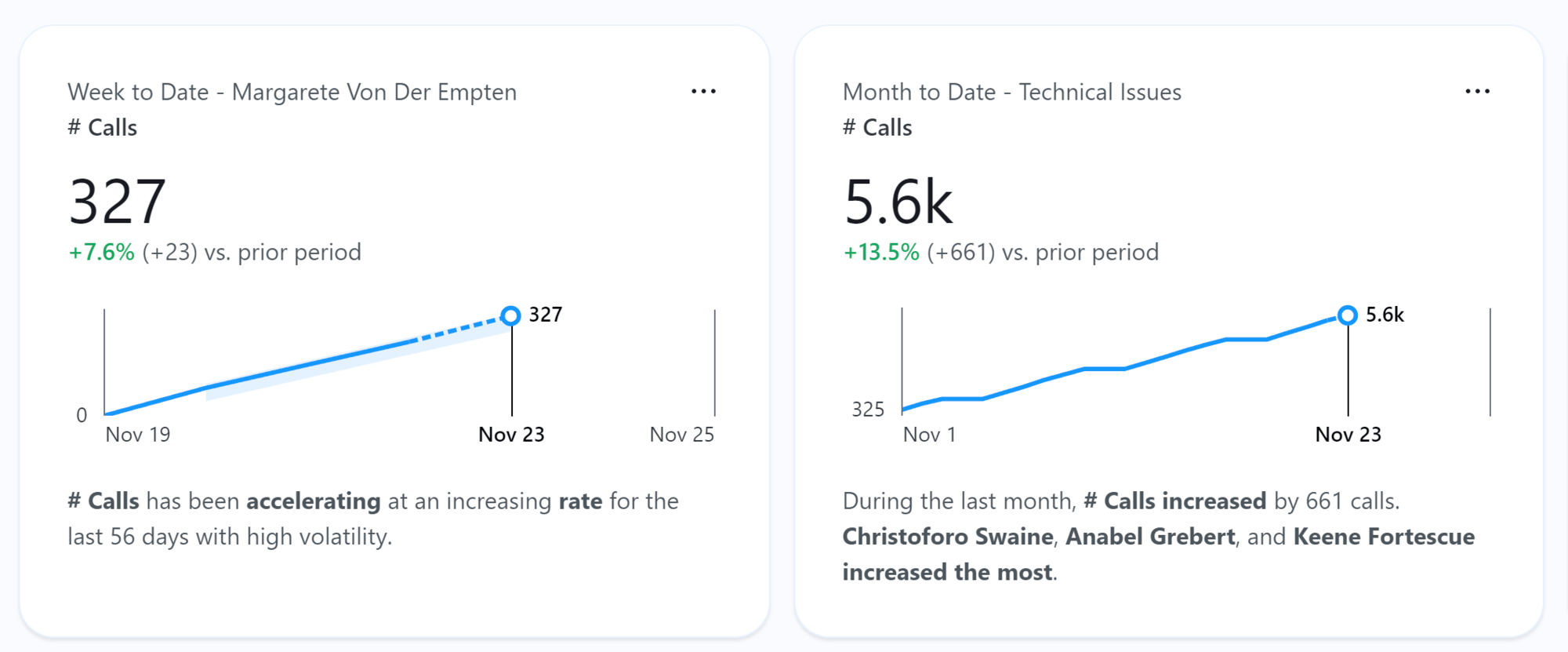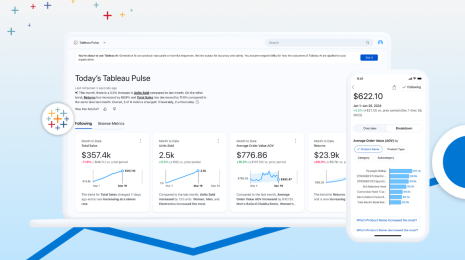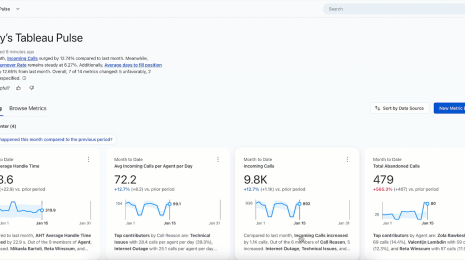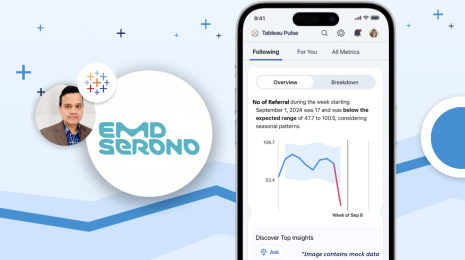Tableau Metrics and Natural Language Query Evolve with Tableau Pulse
With the evolution of voice-based assistants, chat bots, and generative AI assistants, it’s becoming ever more clear that interacting with technology via natural language prompts is here to stay. Tableau has been on a long journey to provide natural language interfaces for analytics. We believe strongly in this capability because it lowers the barrier to entry for new users, and we believe that data is for everyone.
We are truly excited about Tableau Pulse, launched in a wide beta in December 2023 and planned for general availability in Tableau 2024.1. The release of Tableau Pulse introduces some redundancies to the platform, including search-based analytics with Ask Data and Tableau Metrics.
Ask Data
Studies show that only 30% of the average organization uses data. This means seven out of 10 people aren’t empowered to use data to gain insight and make confident decisions. With the importance of data growing, why is there such a huge gap in the adoption of data tools? One answer is the complexity of data and analytical tools.
Tableau launched Ask Data in 2019 to lower the barrier to entry for analytics and enable more people to experience the power of data exploration. Ask Data uses a keyword-based system to map user intent to analytical query and visualization. And several updates have been made to Ask Data over the years, including the addition of type-ahead support and iterative search capabilities.
We have experienced a lot of excitement around Ask Data, but we have also heard clear feedback from our customers: it isn’t “natural” enough—you still have to understand some fundamental data concepts, field names, keywords, and general analytical concepts—to use it. To truly activate that 70% of the organization that doesn’t feel empowered to work with data today, we need to do more.
And of course, the last 12 months have shown us that a huge leap forward in user experience is possible through generative AI, large language models, and chatbots. This represents not just a marginal improvement to natural language query systems but a completely superior experience that we must support to deliver on the promise of search with data.
Metrics enhance data trust
As analytics expand into more end-user use cases, a key challenge is trust in data. If Tableau makes it easy for everyone to explore data, how can you be sure that everyone is getting correct and accurate results? With so many ways to filter, aggregate, and calculate data, it is easy to make mistakes.
In 2020, Metrics in Tableau launched. Metrics provide a way to monitor KPIs that are less dependent on dashboards, offering a focused view on the status and progress of a singular number or indicator. Metrics benefit organizations by providing a consistent view. They have the additional benefit of being abstracted from the visualization, meaning a user can collect all of their metrics in one place for a scorecard of the important indicators they track.
As with Ask Data, thousands of customers embraced Metrics, excited by the idea of centralizing important KPIs in one place and sending users to fewer dashboards. But we also got a key piece of feedback: for Metrics to be useful, they need to be standardized. Tableau’s first version of Metrics was sourced from an underlying dashboard, meaning the metric definition was dependent on the accuracy of the visualization. It also meant there could be multiple versions of the same Metric in a Tableau environment.
The evolution
To accomplish our vision of helping everyone see and understand data, we need to keep evolving our platform to respond to challenges like these.
In December 2023, we launched Tableau Pulse as a wide-release beta and we’re excited to move it to broader general availability in early 2024. Tableau Pulse is an addition to the Tableau Platform with three new components
- A trusted Metrics Layer which allows users to establish centralized, reusable Metrics
- An Insights platform which automatically identifies interesting insights based on the Metrics
- A new user experience focused on natural language exploration of data
Tableau Pulse’s Metrics Layer is a true enhancement to Tableau’s existing Metrics capability and adds more trust to the concept of Metrics—it will replace the previous Metrics capability starting in 2024.1. Pulse’s Insights platform is a brand new enhancement to Tableau and opens up all sorts of new possibilities around automatic insight generation. Pulse’s new user experience (UX) provides clear, natural language insight summarization and simpler data exploration. It can also interact with large language models to provide a better experience for translating data into human language. It replaces Ask Data starting in Tableau 2024.1.

The Tableau Pulse Metrics Layer is scalable—any changes that need to be made to the metric or KPI definition can be made once and will automatically apply to all Metrics related to that definition. (Image sourced from: The Power of a Metrics Layer—and How Your Organization Can Benefit From It.)
Leading with Tableau Cloud
Tableau Pulse is only available in Tableau Cloud. This means Tableau Cloud customers will stop seeing Ask Data and previous-generation Metrics starting with the 2024.1 upgrade, and they will start being able to use Tableau Pulse in that same release.
For Tableau Server customers, we will institute this change when you upgrade to 2024.2, our next Tableau Server release. Ask Data and Metrics will no longer be available.
While we strongly believe that generative AI will offer the optimal user experience for this new paradigm in analytics, the emergence of these technologies has also exposed security and privacy considerations that must be taken into account by customers who deploy them. We are proud to be leveraging the Einstein Trust Layer, a unique framework for leveraging AI within a trusted boundary with protections for data privacy, grounding, and security. The Einstein Trust Layer only works with specific trusted partners, including Tableau Cloud. As a result, our AI-driven capabilities like Tableau Pulse depend on this service and must work through Tableau Cloud.
Today, customers are adopting Tableau Cloud at an unprecedented rate, including customers migrating from Tableau Server to Tableau Cloud. This trend, coupled with the declining adoption rates for Ask Data on-premises made us confident that this is the correct plan for the future.
If you are affected by this change, here’s how you can prepare your environment:
- Monitor Ask Data usage to identify which users need to be proactively notified about the new search experience: Ask Data Usage Help article.
- Identify which Metrics are currently in use in your environment: Set Up for Metrics Help article.
- Reach out to your account representative for more information.







